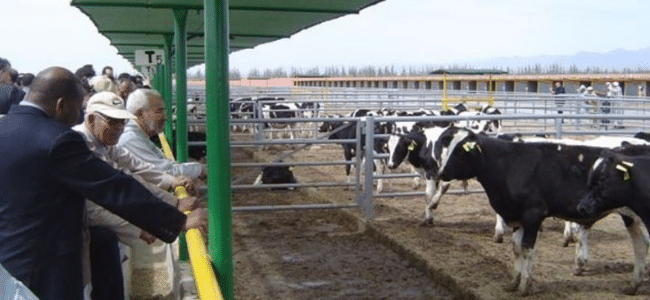Grants from a variety of programs have allowed the U.S. Grains Council (USGC) to expand and deepen programs in markets of the future in recent years, supplementing contributions from Council members and the Market Access Program (MAP) and Foreign Market Development Program (FMD) administered by the U.S. Department of Agriculture (USDA).
Awarded by the USDA’s Foreign Agriculture Service (FAS), MAP supports the building of commercial export markets for U.S. agricultural products through marketing, trade servicing and promotional activities. Similarly, FMD assists trade associations in creating, expanding and maintaining long-term export markets for U.S. agricultural products. Both allocated for a singular calendar year, the funds from these programs are distributed across the more well-established programs USGC supports internationally.
In addition to annual MAP and FMD funding, USGC uses multi-year grants to allow for a broader focus on building long-term markets for U.S. coarse grains.
“The long-term trajectory of growing export opportunities for feed grains trends toward more underdeveloped but growing markets, specifically in the Middle East, Africa, Southeast Asia and South Asia. Part of our responsibility at the Council is to think beyond what may happen this year or next year to help determine where growth opportunities will be in the future,” said Katy Wyatt, USGC’s manager of global strategies.
USDA launched the Agricultural Trade Promotion (ATP) program in 2019 to help the U.S. agricultural industry mitigate the impacts of retaliatory trade measures taken against U.S. farmers and exporters. Managed through FAS, the Council was awarded $20.8 million from ATP to develop new markets while reducing the effects of tariff barriers in other countries. Due to COVID-19 interruptions, this two-year grant has been extended to be spent over multiple years.
Special programs like FAS’s Section 108 provide funding over a three-to-four-year period. The Council currently uses several Section 108 funded grants across the Middle East and Africa, including one directed at poultry and ruminant development in Morocco, a middle-income country of more than 33 million people that has become a growing market for feed grains.
USGC has been present in the Moroccan market for more than 20 years. Despite new competition from South American and Black Sea origins, the Council believes livestock sector growth in Morocco will lead to new opportunities for U.S. feed grains in the region, benefiting U.S. grain producers, suppliers and exporters, as well as the agricultural industry more broadly. Moreover, as the Moroccan poultry, ruminant and feed industries continue to develop, modernize and become more competitive, it will be necessary to pursue reliable suppliers of feed grains and corn co-products, creating opportunities for the U.S. to regain feed grain market share in Morocco while strengthening its relationship with the Moroccan poultry and livestock industries.
In Kenya, the Council is using USDA’s Quality Sampling Program (QSP) funding to work with Unga Farm Care, one of the largest feed manufacturing companies in East Africa. A partnership focused on poultry feeding trials is seeking to demonstrate the nutritional advantages of sorghum in poultry diets to help offset local corn shortages faced in Kenya. While corn is the predominate ingredient used in Kenyan animal feed, it is often in low supply locally as production there encounters drought and competition with its need in human consumption. In addition, local corn is often inconsistent in quality, impacting the performance of the birds.
The QSP program is meant to introduce a market, not a singular company, to a new U.S. commodity or product. The results of the trial will be presented to the broader Kenyan feed industry to relay the nutritional advantages of using sorghum in poultry rations. A large part of USGC’s programming in Kenya is focused on introducing alternative feed ingredients to the market, like sorghum and distiller’s dried grains with solubles (DDGS).
By receiving non-traditional funds like Section 108 and QSP, the Council creates opportunities for growth across those less developed markets of the future.
“We may not see an export of feed grains to Kenya, for example, for a few years – however, we are planting the seeds and developing the foundation for this market today by providing the market information needed to address trade barriers and focusing on supporting the capacity development of growing sectors in the country, feed and poultry specifically,” Wyatt said.
Read about more USGC programs funded through grants.
About The U.S. Grains Council
The U.S. Grains Council develops export markets for U.S. barley, corn, sorghum and related products including distiller’s dried grains with solubles (DDGS) and ethanol. With full-time presence in 28 locations, the Council operates programs in more than 50 countries and the European Union. The Council believes exports are vital to global economic development and to U.S. agriculture’s profitability. Detailed information about the Council and its programs is online at www.grains.org.

